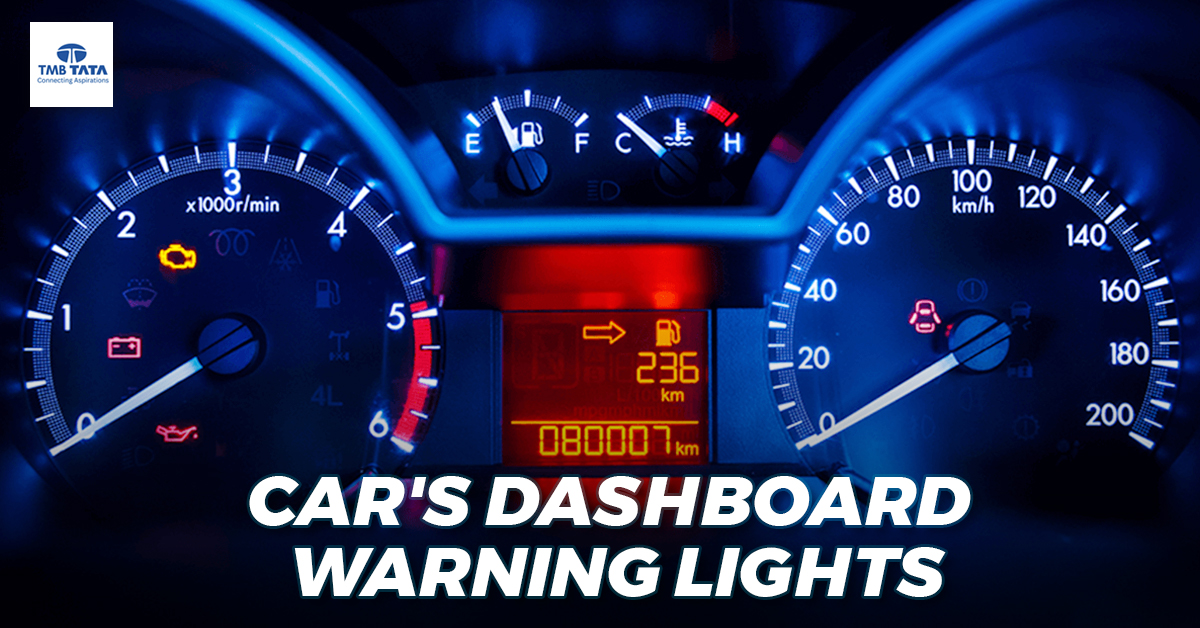
In today’s automotive landscape, your car’s dashboard is more than just a display of gauges; it’s a sophisticated communication system. The dashboard warning lights are vital indicators of your vehicle's health and performance. As you settle into your driver's seat, each illuminated symbol transforms your dashboard into a cockpit, providing real-time feedback on your vehicle's intricate systems.
Every glowing light tells a unique story about your car's well-being, from the persistent engine warning light to the subtle flicker of the tire pressure monitoring system (TPMS). These dashboard lights are your silent guardians, continuously monitoring every aspect of your vehicle's performance to ensure a safe and smooth journey.
In this comprehensive guide, we will navigate the labyrinth of car dashboard symbols, unraveling the mysteries behind each icon. Whether it’s the ominous check engine light or the reassuring glow of the oil pressure warning, you’ll gain the knowledge needed to confidently tackle any situation on the road.
Often resembling an engine, this light indicates potential issues within the engine system. Causes may range from minor problems like a loose gas cap to severe issues requiring immediate attention, such as engine misfires or overheating.
Symbolized by a battery icon, this light signifies problems with your vehicle’s charging system. It could indicate a faulty battery, alternator issues, or electrical system malfunctions.
Depicted by an oil can or oil drop symbol, this light warns of low oil pressure. Ignoring this warning could lead to significant engine damage. It may signify low oil levels, oil pump failure, or leaks.
Shaped like an exclamation mark inside a tire, this light alerts you to low tire pressure. Proper tire inflation is crucial for safety and fuel efficiency. Ignoring this light could lead to tire blowouts or uneven tire wear.
Representing the Anti-lock Braking System, this light indicates potential issues with your braking system. It could signify worn brake pads, ABS sensor failure, or hydraulic system malfunctions.
One of the most notorious dashboard indicators, the check engine light can appear in various forms. It may indicate problems with the engine or emissions system, ranging from minor issues to potential engine damage.
Symbolized by a person with an airbag deploying, this light warns of problems with the airbag system. Malfunctions could render airbags ineffective during a collision, posing a significant safety risk.
Shaped like a thermometer or waves, this light alerts you to engine overheating. Overheating can cause severe engine damage, resulting from coolant leaks, a faulty thermostat, or cooling system malfunctions.
Depicted by a gas pump icon, this light indicates low fuel levels. Running out of fuel can leave you stranded, so it’s essential to refuel promptly upon seeing this warning.
Symbolized by a gear or transmission icon, this light warns of high transmission fluid temperatures. Overheating transmission fluid can lead to transmission failure, often due to towing heavy loads or driving in extreme conditions.
As we conclude our journey through the world of car dashboard symbols, one thing is clear: knowledge is power when it comes to vehicle maintenance and safety. Your dashboard is a vital communication hub, providing essential feedback for a smooth and secure journey.
By understanding the meanings behind these dashboard lights, you can take proactive steps towards vehicle maintenance and safety. Regular checks, timely maintenance, and prompt attention to dashboard warnings become essential practices for ensuring your car's longevity and reliability.
As automotive technology evolves, so must our understanding of vehicle systems. It's our responsibility as drivers to stay informed and adapt to the changing landscape of automotive technology.
So, as you embark on your next journey, let the lessons learned from this guide illuminate your path. With vigilance, knowledge, and curiosity, you can navigate the roads confidently, knowing that you hold the key to unlocking the mysteries of your car's dashboard.
Q: What should I do if the check engine light comes on?
A: When the check engine light illuminates, it’s crucial to address it promptly. While it could indicate something as simple as a loose gas cap, it may also signal serious engine or emissions system issues. Have the vehicle diagnosed by a professional mechanic to prevent potential damage.
Q: Why is my tire pressure monitoring system (TPMS) light on?
A: The TPMS light usually indicates low tire pressure, which can affect handling, fuel efficiency, and tire wear. Check the tire pressure of all tires and inflate them to the recommended levels. If the light persists, there may be a puncture or leak requiring further inspection.
Q: What does it mean if the battery warning light is illuminated?
A: The battery warning light suggests issues with the charging system, including faulty battery or alternator problems. Address this warning promptly to avoid a stalled vehicle or dead battery. Consult a mechanic to diagnose and rectify the issue.
Q: How do I interpret the oil pressure warning light?
A: The oil pressure warning light alerts you to low oil pressure, which can lead to engine damage. Check the oil level and top up if necessary. If the light persists, it may indicate oil leaks or engine wear. Seek professional assistance to prevent engine damage.
